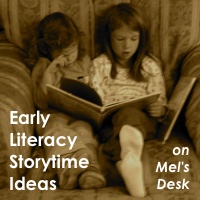Learning to read is a long, complicated cognitive process with many aspects. But we know that a critical early step is when the light bulb goes off and a child understands that all those squiggles on the page MEAN SOMETHING. And not only mean SOMETHING, but mean something SPECIFIC: they represent the words that we hear and say. Before they can read, children need to be able to attend to the print on the page separately from the pictures. Drawing children’s attention to the print from time to time as we read books is a gentle way of helping them learn to “see” the words on the page and understand how they are used.
One of my favorite books for this in a one-on-one situation is the classic “Where’s Spot?” Each time you lift a flap, you see an animal, with a word bubble and the word “no!” I would read this with my girls, and when we lifted the flap, I would point to the word bubble, and we would call out “NO!” together. That’s it! No explanation on my part, no questions on theirs. But the simple, familiar word, visually highlighted by the word bubble, and repeated so many times, helped them over time make the connection between the written word and the spoken word. In fact, the first word my younger daughter read on her own was when she saw “No!” printed in a different book than “Where’s Spot?”
It’s tricky to both lift the flap and point to a word in storytime, but there are lots of other books with repeated words that are great for groups. Jez Alborough’s “Hug” is one; Leslie Patricelli’s “Higher! Higher!” is another. Point to the word each time you read it as you go through the book, then you can say something like this to the adults: “Grown ups, when you point to words while you read, your children learn that there are words on the page in addition to the pictures. They need to be able to recognize what words look like before they can become a good reader. You don’t need to do this with every book you read, but try it now and then when you find a book that uses one word over and over again, like the book we just read together.”



.jpg)

2 Responses to Early Literacy Storytime: Point to a Word